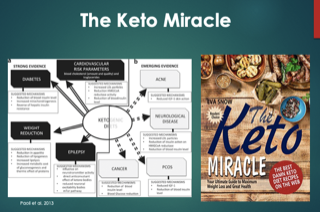We’ve been told so many lies about what’s right and wrong with the way we eat. In this article, you will find the truth about dietary fat, the history and benefits of the ketogenic diet, the keto-adaptation period and how to handle it, using fasting as a tool for optimal health and supplements to support your ketogenic lifestyle. I’ve been living the keto lifestyle since 2018 and it has been life-changing for me. During the Live Beyond Iceland experience, Shawn Wells gave an amazing workshop on how to biohack your nutrition, and Kirsten Flanagan summarized the most relevant information in this amazing article.
Keep reading to learn why and how you can biohack your nutrition.
The ugly truth about fat
Isn’t fat, saturated fat and cholesterol terrible for our health? Well, not quite! For decades, we have been told that eating fat will cause heart disease and that saturated fat will clog up our arteries causing a heart attack, right? The man responsible for this false premise, Ancel Keys, conducted a research study in the 1970’s, from which he hand-picked correlative data, leading to the demonizing of dietary fat. This was the basis on which the low-fat dietary recommendations were set all around the world.
Over the years, the fear of eating too much fat, especially saturated fat, grew and as a result, the human diet shifted from one consisting of meat and animal fats to one containing primarily carbohydrates. Interestingly, with this change, rates of obesity and diabetes skyrocketed! In fact, since 1975, the worldwide obesity rate has tripled. Are you suspicious yet?
It turns out that the real culprit is in fact the combination of high carbohydrate and high fat foods, and not the consumption of fat alone. This becomes strikingly obvious when we look at the western diet today. It is laden with highly refined carbohydrates and processed, damaged fats like vegetable oils – the perfect combination for a super addictive response! We live in world with on-demand access to highly palatable, over-processed and unnatural foods, removing us further and further away from our ancestral way of eating.
When we think about it, there are no high carb, high fat foods that exist in nature, and our ancestors typically would not have been eating these simultaneously. Looking at how the body works, when there is an abundance of carbohydrates available, fat breakdown is blocked and is instead stored. So, having both in the body at the same time is a recipe for disaster as we are never able to tap int our fat storage for fuel!
This brings about the question then, what is the perfect diet? Well, if optimal health is the goal, it seems to be that leaning towards a higher fat, lower carbohydrate diet is best – the opposite to what we have been told to believe. Eating a diet rich in plenty of natural fats, such as avocado, olive oil, nuts, fatty fish and grass-fed butter, without the added carbohydrates is not only healthy, but essential for optimal function of our brains and bodies. Along with frequent periods of not eating (fasting), this is how our ancestors would have eaten, based on what they had available to them.
With the recent rise in research and the number people adopting a low-carb diet, it has become evident that limiting carbohydrate consumption can lead to many health improvements like weight loss, blood glucose control and management of diabetes and, as a result, we have seen a huge surge in the popularity of the ketogenic diet.

The ketogenic diet
More of a lifestyle than a diet, the ketogenic (keto) diet has been around for many years. Early in the 1920’s, the keto diet was found to mimic fasting and was used as a treatment for epilepsy. Its therapeutic use was replaced by the development of seizure medications, of course, and the diet was lost for years. However, the recent resurgence of studies on the keto diet showing its many benefits for weight loss and type 2 diabetes prevention, have led to its rapid rise in popularity today.
A well-formulated ketogenic diet consists of 60-75% fat, 15-25% protein and 0-5% carbohydrates. The mechanism behind its effects is that when carbs are restricted, the glucose level in the blood is lowered, making insulin levels lower too. This allows the body to breakdown and release its stored fat and dietary fat into the bloodstream, which can then be converted into ketones in the liver. Ketones enter the bloodstream and can be used all around the body for energy.

Essentially, the body becomes a ‘fat-burner’ as opposed to a ‘sugar-burner’! This is good for two reasons: fat produces more ATP (energy) per molecule when compared to glucose, and it produces less oxidative stress in this process, making it a much ‘cleaner’ and more sustainable fuel source.
Benefits of the keto diet
Based on the fact that the diet was used therapeutically for treating patients with epilepsy, it is obvious that there is some magic to what this diet does to the body. A notable benefit of the diet is its effects on brain function. Our brains can use ketones as a fuel source extremely well, making us sharp and focused. In neurological diseases, where parts of the brain are unable to use glucose for energy, the supply of ketones can allow it to function properly and alleviate or even cure these diseases.
One of the major reasons for the popularity of the keto diet is the increase in fat oxidation – this is the burning of fat as fuel that has the incredible effect of weight loss. When we stop relying on glucose to fuel our bodies, we can tap into the endless (almost!) energy source that we carry around everywhere – fat! These are only some of the benefits of following a ketogenic lifestyle, so check out a few of the resources we have provided below to learn more.
The keto-adaptation period
It is important to understand that it takes a period of time after beginning the ketogenic diet for the body to switch to using fat for fuel instead of glucose. This is called keto-adaptation and is when symptoms like brain fog, fatigue, headaches or dehydration can occur. What many people don’t realise is that these symptoms can be alleviated and typically only last a couple of weeks but may extend up to several months.
Some tips:
- Headache – drink plenty of water and replenish with electrolytes
- Constipation – add fibre to the diet
- Lack in energy – add more fat
- Brain fog – supplement with ketones
Once you have trained your body to use fat as fuel, these symptoms will disappear, and you’ll be performing mentally and physically on a whole new level!
Fasting for optimal health
A big component of the ketogenic diet is fasting. We have been told to continually snack throughout the day to boost our metabolism or to keep our energy levels up and avoid the ‘crash’. This is a myth and couldn’t be further from the truth!

Going periods of time without eating can be healthy. The reason can be explained by the hormonal responses in our body when we eat, or don’t eat. When we ingest a meal, our body releases the hormone insulin. Insulin promotes the absorption of nutrients from food into our body (amino acids from protein; free fatty acids from fat and; glucose from carbohydrates). It stimulates the storage of these nutrients into fat and muscle cells for later use. We don’t want to constantly be in this absorptive state – we want to stimulate the opposite state to allow this stored energy to be used up from time to time.
Insulin peaks at around 1-1.5 hours after a meal, after which it begins to decline. The decline in insulin is what triggers the rise in the opposing hormone: glucagon. This hormone puts us into the opposite to the absorptive state – breaking down stored carbohydrate (glycogen) into glucose and stored fat into free-fatty acids and putting them into the blood stream to be used for energy. This is called the post-absorptive state, where we can burn stored fat and carbohydrates.
Basically, if we eat all the time, we are continuously stimulating the release of insulin and thus never allow the utilisation of our stored energy. By allowing glucagon to work, we allow the burning of fat as fuel – a more efficient and cleaner energy source. This is the basis of intermittent fasting (IF). A popular form of IF is time-restricted eating (TRF), which involves restricting food intake to specific time periods during the day. Most widely used is the 16:8 approach: 16 hours of fasting with an 8-hour eating window.
IF has a wide range of benefits that ultimately arise from making the body more metabolically flexible – meaning having the ability to switch between burning fat and carbohydrates. Apart from promoting weight loss, fasting is a very healthy practice that stimulates various beneficial processes in your body, such as the breakdown and clearance of old and damaged cellular contents – a process known as autophagy. Again, the resources below will provide adequate information on the steps to take to properly and safely implement these lifestyle practices.
Supplements to support a ketogenic lifestyle
Optimal health can be achieved through eating a well-formulated diet, having sufficient and good quality sleep, doing the right amount of physical activity, and having low levels of stress. However, these days, various things tend to get in the way, making it difficult to execute each of these areas of life perfectly, putting us into a state of suboptimal health. With the quality of products that we usually eat, it isn’t possible to get all the nutrients we need solely from food. This is where supplements come in. Adding the right supplements into your lifestyle could be the one change that takes your health to the next level.
With an overwhelming number of supplements on the market today, deciding on the best ones can be a daunting task. So, here is a list of the top 5 supplements to support a ketogenic lifestyle:
- Exogenous ketones | helps to put the body into a state of ketosis (fat-burning state)
- C8 MCT Oil | helps to raise endogenous ketone levels
- Adaptogens | used for stress relief, adrenal health and cognitive health and performance (examples: Ashwagandha, Rhodiola, Lion’s Mane, Maca)
- Creatine | an energy molecule that can improve performance and body composition, reduce mental fatigue and improve cognitive repair
- Omega-3 | high in DHA, a fatty acid that is a major component in cell membranes and is essential for brain growth and function
BONUS! Berberine | extremely powerful supplement that improves insulin sensitivity and aids in weight loss
There is a lot of noise out there! As you dive into the ketogenic lifestyle, you will come across various resources with many different opinions! Be sure to check the source of your information and only take on board the information that comes from qualified and well-educated people. In saying this, be sure to check out Shawn’s website and sign up to his newsletter. This will equip you with valuable, science-backed information and is great place to begin your keto journey. Remember, this is a lifestyle and not another diet. Take the leap and fuel your body with clean, whole food sources!
Useful resources to learn from:
Keto Resources: Shawn Wells, Ketovangalist, Ketogenic.com
Fasting resources: Bulletproof Diet, Keto Mojo, Perfect Keto
Paleo Resources: Mark’s Daily Apple, Robb Wolf, Paleo f(x)

This article was written by Kirsten Flanagan, B.Sc. based on the presentation by Shawn Wells.
If you want to know more about the keto diet and metabolic flexibility, have a look at this article I wrote for the Biohacker Summit:




